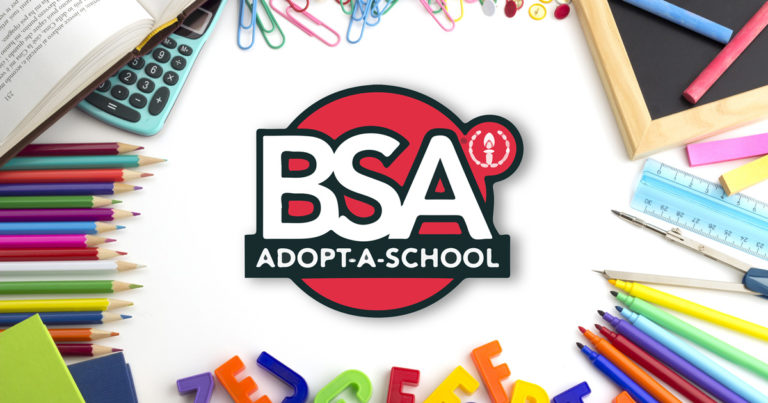4 ways the BSA is strengthening its relationships with schools

In many cities and towns, the mission to grow Scouting begins at schools.
That’s where lots of young people first learn about the Cub Scout packs and Boy Scout troops of which their classmates are members.
The alignment is natural and robust. Scouting and schools emphasize civics, preparedness and service to the community.
Ready to strengthen the relationship between Scouting and schools in your area? The BSA has several resources to help.
Here’s a look at four of these tools — some new, some revised to meet modern needs.
 1. Adopt-A-School
1. Adopt-A-School
The BSA’s Adopt-A-School program often is the first step in connecting Scout units with schools.
Units make a minimum one-year commitment to partner with school administrations and offer the volunteer services that most effectively meet the school’s needs.
Here’s what this often looks like: In exchange for meeting space and other support from the school, Scout units complete at least four service projects to beautify the school inside and out.
The school and surrounding community benefit greatly, and units get service hours that count toward Journey to Excellence progress. It is the very definition of “win-win.”
Learn more: At the Adopt-A-School site.
 2. Outstanding Educator Award
2. Outstanding Educator Award
The Elbert K. Fretwell Outstanding Educator Award is a new BSA award with real potential to result in membership growth.
It’s named after the professor of education at Columbia University who became the BSA’s second Chief Scout Executive, succeeding James E. West.
The Outstanding Educator Award — also referred to as the Fretwell Award — is presented to teachers, educational support staff and school administrators who instill Scouting values in their students. It recognizes a person’s work for students in his or her professional role — not for what the person does directly for Scouting.
The award can be presented at the district, council, area, regional and national levels. There’s no minimum or maximum number of awards that can be presented per school year. That said, a good guideline is one award per year per school.
Learn more: In this implementation guidebook (PDF).
 3. Report to the School District
3. Report to the School District
Each year, the BSA sends a group of impressive young men and women to Washington, D.C., to present the Report to the Nation. The report, mandated in the BSA’s 1916 charter, is basically a Scouting good-news tour. The delegates meet with several key officials to tell them about the accomplishments of Scouts from the previous year.
Many BSA councils also organize a Report to the State trip. Same idea, different scale.
Report to the School District follows this pattern. Scouts meet with district leaders to tell them how Scouting supports the community. This is a great way to promote Scouting and renew relationships with schools.
It’s an opportunity to highlight and share the ways Scouting affects the local school district.
Learn more: In this Report to the School District Guide (PDF).
 4. School Access Training Module
4. School Access Training Module
The phrase “school access” means something different in almost every school district.
It may be:
- The ability to send home a message with prospective Cub Scouts.
- The opportunity for a BSA representative to talk to a group of prospective Cub Scouts at school.
- The use of a school facility.
A 50-minute training module tells volunteers what they should know about schools to optimize access, what the law says about school access, three examples of responding to school access challenges, and proven practices for building relationships with school personnel.
The module can be done as a stand-alone session or as a part of a “day of training” course.
Learn more: In this training module (PDF).
4 ways the BSA is strengthening its relationships with schools
